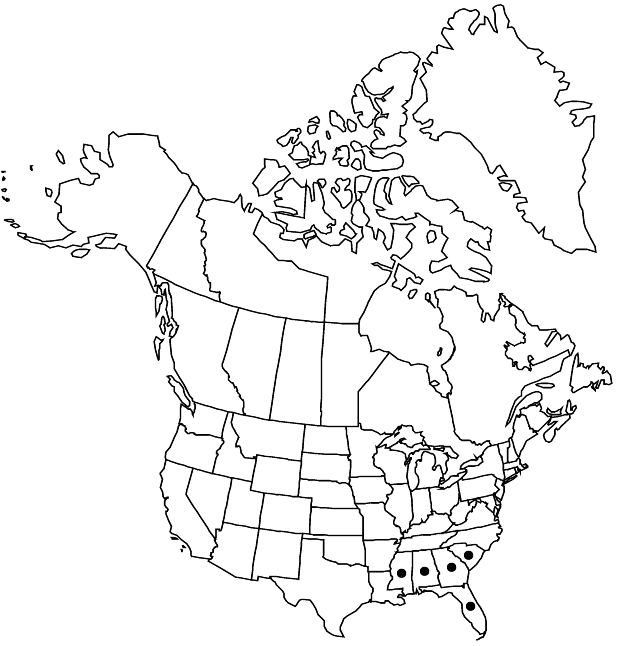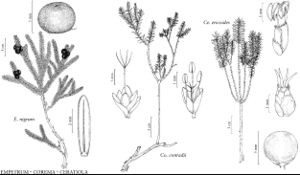Ceratiola ericoides
Fl. Bor.-Amer. 2: 222. 1803,.
Plants 0.5–2.5 m; bark gray (interior surfaces reddish), exfoliating on older branches. Leaves 4 (6) per node; petiole appressed to ascending, tan, 0.5–1 mm; blade yellow-green to green, linear to acicular, 5–15 × 0.7–1 mm, base acute to rounded, apex acute, surfaces minutely glandular to glandular-hairy, with prominent, longitudinal groove abaxially. Inflorescences sessile; bracteoles 2 (–4), sessile, ovate, 0.8–1 mm, margins erose. Flowers sessile, tan to reddish-brown; sepals persistent, imbricate, ovate to orbiculate, 1–1.5 × 0.7–1 mm, margins fimbrillate; petals persistent, imbricate, 1–1.5 × 0.7–1 mm, margins fimbrillate; stamens reddish-brown; filaments 2–3 mm; anthers 1 mm; pistil reddish purple, 1.5–2.5 mm; ovary ovoid, 0.7–1 mm; style 0.7–1 mm, ± equaling stigma; stigma 0.5–1 mm. Drupes red (tan to yellow), 1.5–2 mm diam. Seeds (pyrenes) reddish-brown, 1–1.7 mm. 2n = 26.
Phenology: Flowering Mar–Jun(-Nov).
Habitat: Deep, xeric, sandy soils of oak scrub, sand pine scrub, longleaf pine sand hills, fluvial sand ridges, and maritime dune fields
Elevation: 0-100 m
Distribution

Ala., Fla., Ga., Miss., S.C.
Discussion
Ceratiola ericoides occurs in sites with low fire frequency, yet its seed germination is stimulated by fire once seed production begins at 10–15 years of age (A. F. Johnson 1982b). Leaves are strongly aromatic.
Selected References
None.
